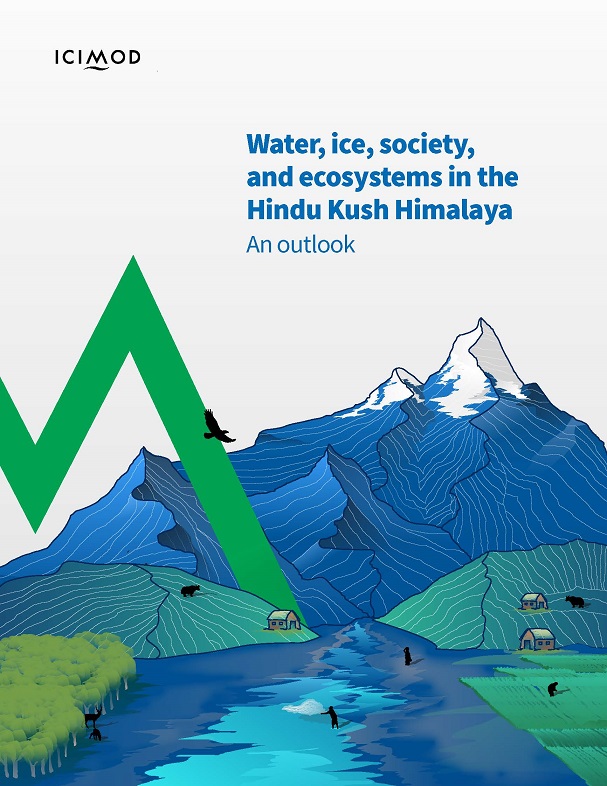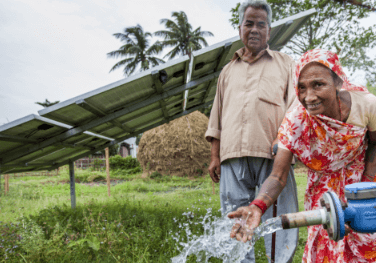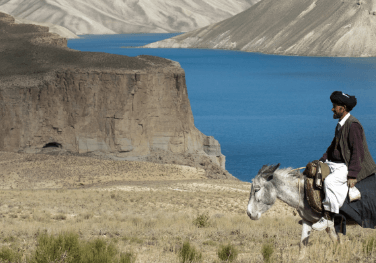OUR DIGITAL REPOSITORY
ICIMOD’s central document repository and online digital library, HimalDoc is a one-stop portal for publications, journal articles, reports, theses and other information resources related to the Hindu Kush Himalaya.
Find here all of our recently uploaded resources.
Through our publications, we seek to influence policy, to inform decision making in the interest of mountain and people.

ICIMOD’s engagement in the HKH is built on efforts to strengthen resilience among communities, confront the climate crisis, and implement on-the-ground solutions through cooperation that transcends boundaries.

The Water, ice, society, and ecosystems in the Hindu Kush Himalaya (HI-WISE) report draws on recent scientific advances to map for the first time the links between the cryosphere, water, biodiversity, and society in the region, charting the impacts of rapid changes in glaciers and snow on people and nature.
Based on an assessment of the literature, this peer-reviewed report shows that the HKH cryosphere is undergoing unprecedented and largely irreversible changes over human timescales, primarily driven by climate change. The impacts are becoming increasingly clear, with increased warming at higher elevations, the accelerated melting of glaciers, increasing permafrost thaw, declining snow cover, and more erratic snowfall patterns.
The report also provides recommendations for policymakers on addressing the cascading impacts of climate change in the critical mountain biome, which will affect a quarter of the world’s population.

This is a pivotal moment in our history. The world around us is changing and here, on the top of the world, things are changing fast. We are witnessing rapid climate change, biodiversity loss, increased disaster risk, and rising poverty and inequality.
This strategy for 2023-2030 outlines how we will work to address these challenges and achieve our vision of a greener, more inclusive, and climate resilient Hindu Kush Himalaya. It has been developed in response to a request of our Board of Governors and International Support Group to raise our ambition, with ICIMOD@40 in 2023, and in the face of the climate and environment crises hitting the region.
It draws on our learning from the last two plan periods, quinquennial reviews, and a broad-based strategy development process involving staff, donors, partners, and nodal agencies in the Regional Member Countries (RMCs).
It describes our institutional theory of change and the impact areas and pathways that will guide our work to effect that change. It highlights the partnerships that will enable this change – with our eight RMCs; government, civil society, and private sector partners; and our donors and supporters across the world.
The strategy envisages a new and effective monitoring, evaluation and learning system in place to enable continuous learning, strategizing, and course correction, with an emphasis on learning from both success and failure. Lastly, it charts out the resource mobilisation goals that will enable climate action at scale in the RMCs.
Read in Chinese
Browse the full repository by document type and subject.
Within HimalDoc, we have organized special collections tagging our regional programmes and initiatives. Here you will find in one place all of the publications relevant to the initiative or programme.



Browse through useful regional and global resources. Contents are given below.
HimalDoc is the central repository of ICIMOD knowledge products. It serves as an open-access knowledge portal for a wide range of publications related to climate, socioeconomic, and environmental change and sustainable development in the Hindu Kush Himalayan (HKH) region. Making these resources and data available through a single interface is crucial to further research, development, and policy making. HimalDoc stores knowledge crucial to protecting the pulse of the planet.
Based on access types, HimalDoc contains four types of information resources:
ICIMOD internal publications adopt a specific Creative Commons license. (ICIMOD internal publications are those published under ICIMOD ownership since its establishment in 5 December 1983.)
ICIMOD internal publications may be reproduced in whole or in part and in any form for educational or nonprofit purposes without special permission from the copyright holder, provided acknowledgement of the source is made. ICIMOD would appreciate receiving a copy of any publication that uses an ICIMOD publication as a source. ICIMOD publications may not be used for resale or for any other commercial purpose whatsoever without prior permission in writing from ICIMOD. The views and interpretations in this publication are those of the author(s). They are not attributable to ICIMOD and do not imply the expression of any opinion concerning the legal status of any country, territory, city, or area of its authorities, or concerning the delimitation of its frontiers or boundaries, or the endorsement of any product.
The Himalayan University Consortium (HUC) is an initiative under ICIMOD’s Regional Programme on Mountain Knowledge and Action Networks (MKAN). It seeks to improve collaboration among the HKH region’s universities and to promote centres of excellence on key topics relevant to the region. The aim is to build a dynamic mountain knowledge partnership among universities, ICIMOD, and regional member country partners to promote research and learning. HimalDoc aims to link HUC members’ libraries, making available an array of resources from across the region. A parallel search can be performed to search HimalDoc and HUC library resources together by selecting the HUC library from the browsing section under the “Parallel search” heading.